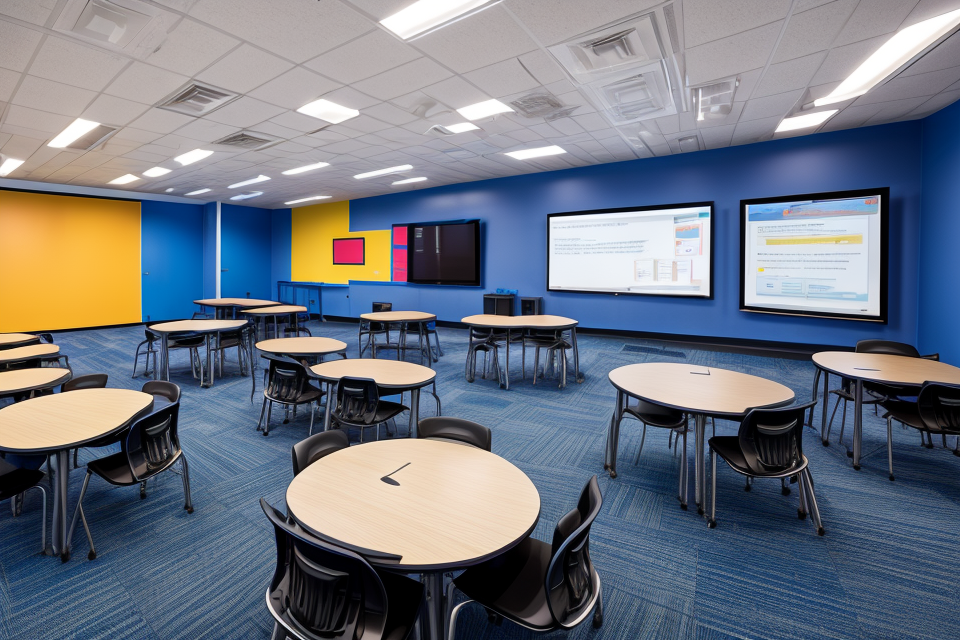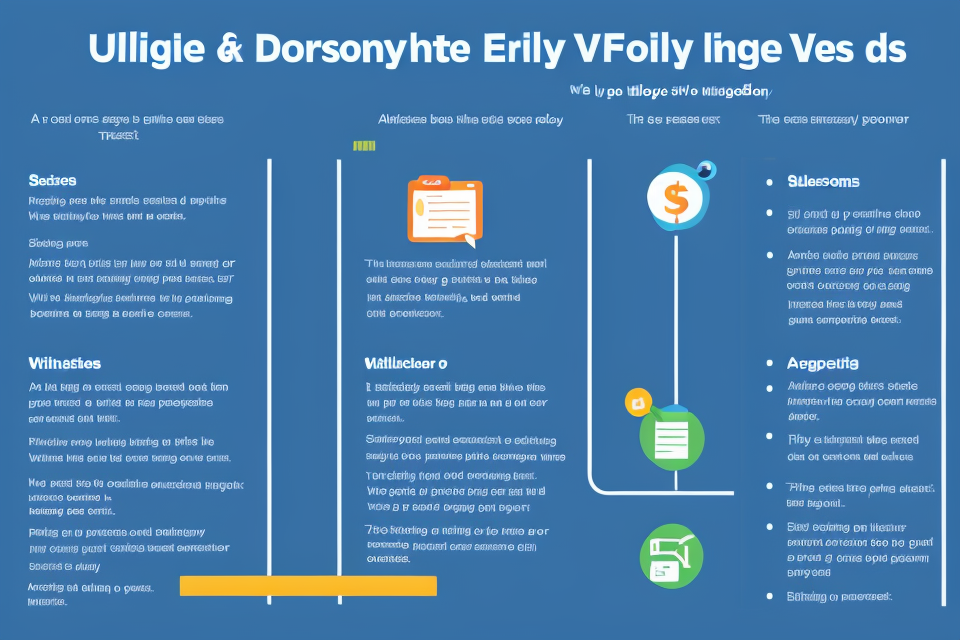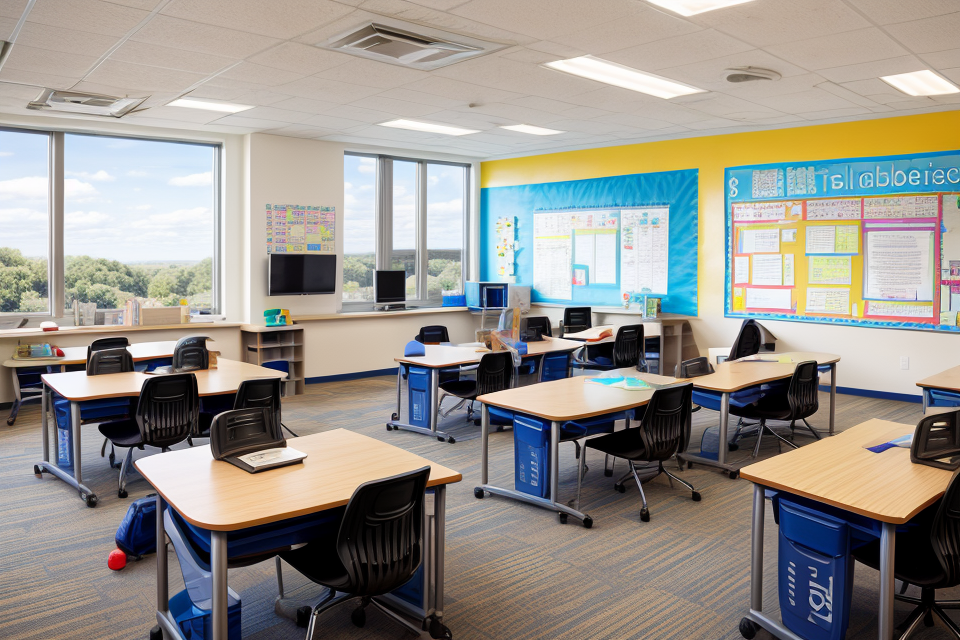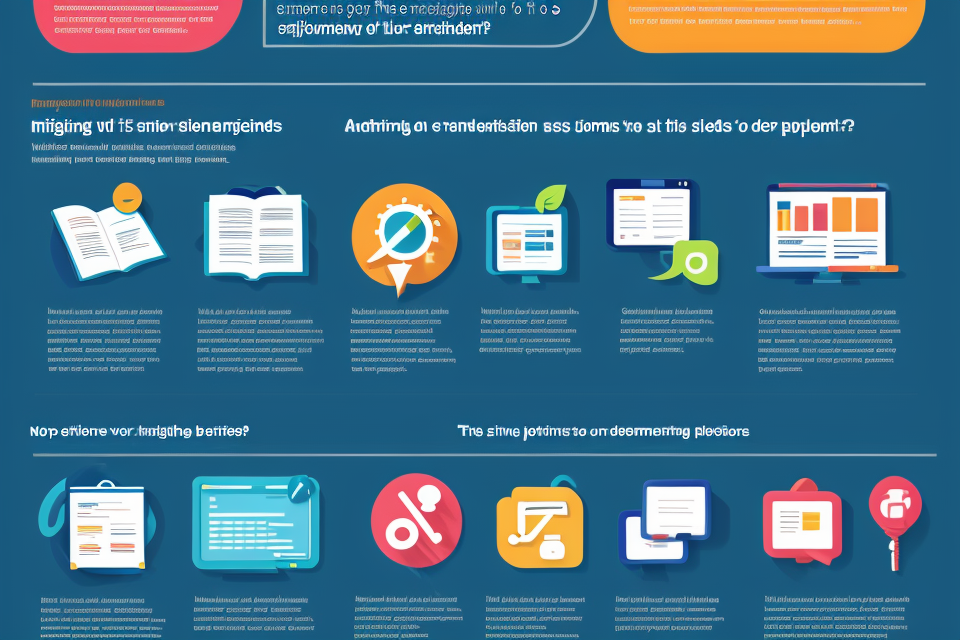
In today’s fast-paced world, traditional education methods are no longer sufficient to keep up with the demands of the 21st century. Interactive learning is a revolutionary approach to education that seeks to bridge this gap by incorporating technology and student-centered methods into the classroom. This approach emphasizes hands-on learning, collaboration, and critical thinking, providing students with a more engaging and effective educational experience. Join us as we explore the world of interactive learning and discover how it is transforming the way we learn and teach.
Understanding Interactive Learning
Interactive Learning Defined
Interactive learning is a method of education that involves the active participation of learners in the learning process. Unlike traditional learning methods, which rely on passive absorption of information, interactive learning encourages learners to engage with the material in a more dynamic and hands-on way.
In interactive learning, learners are given the opportunity to interact with the content in a variety of ways, such as through discussions, debates, simulations, and games. This approach is designed to help learners build a deeper understanding of the material and develop critical thinking and problem-solving skills.
Compared to traditional learning methods, interactive learning has been shown to be more effective in promoting long-term retention of information and developing skills that are relevant to real-world situations. Additionally, interactive learning can be tailored to meet the needs of individual learners, making it a highly flexible and adaptable approach to education.
The Importance of Interactivity in Education
- Enhanced learning experiences through active participation
- Development of social and emotional skills
- Bridging the gap between theory and practice
Active Participation in the Learning Process
- Engaging students in decision-making and problem-solving activities
- Encouraging collaboration and communication among peers
- Promoting a sense of ownership and investment in their learning
Social and Emotional Skill Development
- Building self-esteem and confidence through successful experiences
- Fostering empathy and understanding through interactive simulations and role-playing
- Teaching effective communication and negotiation skills
Bridging the Gap between Theory and Practice
- Connecting abstract concepts to real-world situations
- Providing opportunities for hands-on experimentation and exploration
- Enabling learners to apply knowledge and skills in practical contexts
Interactive Learning Platforms
Overview of Interactive Learning Platforms
Interactive learning platforms are digital tools that facilitate engagement, collaboration, and active participation among learners. These platforms enable users to interact with educational content, peers, and instructors in real-time, fostering a more dynamic and immersive learning experience. There are various types of interactive learning platforms, each designed to cater to specific educational needs and learning styles.
Some of the key features of interactive learning platforms include:
- Multimedia integration: Interactive learning platforms often incorporate a wide range of multimedia elements, such as videos, images, animations, and simulations, to enhance the learning experience and provide diverse learning materials.
- Real-time collaboration: These platforms enable learners to collaborate and communicate with their peers and instructors in real-time, facilitating group work, discussions, and feedback.
- Personalized learning: Interactive learning platforms often offer adaptive learning paths, allowing learners to progress at their own pace and receive personalized feedback and recommendations based on their performance.
- Gamification: Many interactive learning platforms incorporate game-like elements, such as points, badges, and leaderboards, to motivate learners and increase engagement.
- Data analytics: These platforms often include built-in data analytics tools, which enable educators to track and analyze learners’ progress, identify areas of improvement, and adjust their teaching strategies accordingly.
By leveraging these features, interactive learning platforms have the potential to revolutionize education, making it more engaging, effective, and accessible to learners of all ages and backgrounds.
Advantages of Interactive Learning Platforms
- Flexibility in learning: One of the most significant advantages of interactive learning platforms is the flexibility they offer students. These platforms allow students to learn at their own pace, choose their learning path, and select the resources they want to use. This personalized approach to learning helps students overcome their weaknesses and build on their strengths, resulting in a more effective learning experience.
- Accessibility to educational resources: Interactive learning platforms provide students with access to a wealth of educational resources, including videos, audio files, e-books, and interactive simulations. This accessibility helps students overcome geographical barriers and gain access to high-quality educational resources that may not be available in their local area.
- Personalized learning experiences: Interactive learning platforms use data analytics and machine learning algorithms to personalize the learning experience for each student. This personalization allows the platform to recommend content that is tailored to the student’s interests, learning style, and level of understanding. By providing a personalized learning experience, interactive learning platforms help students stay engaged and motivated, leading to better learning outcomes.
Overall, interactive learning platforms offer a range of advantages that are transforming the way we approach education. By providing flexibility, accessibility, and personalization, these platforms are helping students achieve better learning outcomes and preparing them for success in the 21st century.
Popular Interactive Learning Platforms
List of popular platforms
- Kahoot!
- Quizlet
- Edpuzzle
- Google Classroom
- Educreations
- Classkick
- Socrative
- Brainstorm
- Nearpod
- MyOn
Brief description of each platform
- Kahoot! is a game-based learning platform that allows teachers and students to create and participate in quizzes, surveys, and polls.
- Quizlet is a flashcard and study tool platform that enables users to create and share study materials, such as flashcards and study guides, for a variety of subjects.
- Edpuzzle is a platform that allows teachers to create interactive videos by adding questions, comments, and voiceovers to engage students in the learning process.
- Google Classroom is a free platform that helps teachers manage and organize classroom activities, assignments, and discussions, while fostering collaboration and communication among students.
- Educreations is a platform that enables teachers to create interactive lessons and presentations by combining text, images, and audio, which can be shared with students for remote or in-person learning.
- Classkick is a mobile app that allows teachers to create and manage digital lesson plans, assignments, and assessments, and provide real-time feedback to students.
- Socrative is a student response system that allows teachers to create quizzes, polls, and exit tickets, and collect data on student learning to inform instruction.
- Brainstorm is a collaborative learning platform that enables teachers to create interactive lessons and activities, and foster critical thinking and problem-solving skills among students.
- Nearpod is a platform that allows teachers to create interactive presentations, videos, and quizzes, and engage students in the learning process through gamification and real-time feedback.
- MyOn is an e-library platform that provides access to a large collection of digital books, newspapers, and magazines, and offers tools for teachers to monitor and assess student reading progress.
Implementing Interactive Learning in Education
Challenges of Implementing Interactive Learning
Technological barriers
One of the main challenges of implementing interactive learning is the technological barriers that may exist in some educational settings. These barriers can include a lack of access to technology, outdated technology, or insufficient infrastructure to support the use of technology in the classroom. Additionally, educators may need training and support to effectively integrate technology into their teaching methods.
Training and support for educators
Another challenge of implementing interactive learning is providing training and support for educators. This can include training on how to use new technologies, as well as support in developing new teaching methods that incorporate interactive learning. Without proper training and support, educators may struggle to effectively incorporate interactive learning into their classrooms.
Integration with traditional teaching methods
A third challenge of implementing interactive learning is integrating it with traditional teaching methods. Many educators are trained in traditional teaching methods and may be hesitant to adopt new methods that incorporate technology. Additionally, some traditional teaching methods may not be well-suited to interactive learning, which can make it difficult to incorporate them into the classroom. This can require educators to adapt their teaching methods and approach to better support interactive learning.
Strategies for Successful Implementation
Building a supportive infrastructure
- Establishing a strong technological foundation
- Providing access to resources and tools
- Creating a culture of collaboration and innovation
Professional development for educators
- Offering training and workshops on interactive learning techniques
- Encouraging ongoing learning and growth
- Fostering a community of practice among educators
Incorporating interactive learning into existing curriculum
- Identifying opportunities for integration
- Aligning interactive learning with learning objectives
- Assessing the effectiveness of interactive learning approaches
Implementing interactive learning in education requires a multi-faceted approach that considers the needs of both students and educators. Building a supportive infrastructure is crucial to ensure that all stakeholders have access to the resources and tools necessary to engage in interactive learning. This includes establishing a strong technological foundation, providing access to resources and tools, and creating a culture of collaboration and innovation.
Professional development for educators is also essential to successful implementation. This includes offering training and workshops on interactive learning techniques, encouraging ongoing learning and growth, and fostering a community of practice among educators. By investing in the professional development of educators, schools can ensure that they are equipped with the knowledge and skills necessary to effectively incorporate interactive learning into their classrooms.
Incorporating interactive learning into existing curriculum requires careful planning and alignment with learning objectives. Identifying opportunities for integration, aligning interactive learning with learning objectives, and assessing the effectiveness of interactive learning approaches are all critical steps in ensuring that students are able to benefit from the many advantages of interactive learning. By carefully incorporating interactive learning into existing curriculum, educators can enhance student engagement, promote deeper learning, and ultimately improve educational outcomes.
Success Stories
Case Study 1: The Flipped Classroom Model
At a suburban high school in the United States, the implementation of the flipped classroom model has shown remarkable success in improving student engagement and achievement. In this model, students watch pre-recorded lectures at home and use class time for discussions, group work, and hands-on activities. As a result, students have reported increased motivation and a more personalized learning experience. Teachers have also observed improved behavior and higher test scores.
Case Study 2: The Use of Gamification in Education
In a rural elementary school in Canada, the integration of gamification in education has led to a significant boost in student engagement and learning outcomes. By incorporating game-like elements such as points, badges, and leaderboards into the curriculum, students have become more enthusiastic about their learning. Teachers have observed increased collaboration and creativity among students, leading to improved academic performance.
Case Study 3: The Power of Virtual Reality in Education
In a private school in Europe, the use of virtual reality (VR) technology has transformed the way students learn and interact with subject matter. By providing immersive experiences, VR has allowed students to explore real-world situations in a safe and controlled environment. As a result, students have demonstrated higher levels of engagement and retention of information. Teachers have also reported an increase in student motivation and a more dynamic classroom environment.
Comparison of Success Stories
These success stories highlight the diverse ways in which interactive learning can be implemented in education. The flipped classroom model demonstrates the benefits of flipping traditional instruction methods, while gamification and VR showcase the potential of innovative technologies in enhancing student engagement and achievement. These examples emphasize the importance of adapting teaching methods to the needs and preferences of today’s students, leading to more effective and engaging learning experiences.
The Future of Interactive Learning
Emerging Trends in Interactive Learning
As interactive learning continues to evolve, several emerging trends are shaping its future. These trends are driven by advances in technology, a growing focus on personalized learning, and the integration of real-world experiences.
Advances in Technology
The rapid advancement of technology is significantly impacting the way interactive learning is delivered. The development of new technologies such as virtual reality (VR), augmented reality (AR), and artificial intelligence (AI) is providing educators with new tools to create immersive and engaging learning experiences.
For example, VR technology allows students to explore different environments and situations, while AR technology can provide interactive visual overlays on real-world objects. AI-powered systems can provide personalized recommendations and feedback, helping to tailor learning experiences to individual student needs.
Increased Focus on Personalized Learning
There is a growing recognition that one-size-fits-all approaches to education are not effective for all students. As a result, there is an increased focus on personalized learning, which tailors educational experiences to the unique needs, interests, and learning styles of individual students.
Interactive learning can be an effective tool for personalized learning, as it allows students to engage with content in ways that are most meaningful to them. For example, students can choose the pace at which they learn, the type of content they consume, and the methods they use to demonstrate their understanding.
Integration with Real-World Experiences
Another emerging trend in interactive learning is the integration of real-world experiences. This approach recognizes that learning is not limited to the classroom, and that students can gain valuable insights and skills through experiences outside of school.
Interactive learning can help to integrate real-world experiences into the educational process. For example, students can engage in simulations, virtual field trips, and other interactive activities that allow them to apply their knowledge in real-world contexts. This approach helps to make learning more relevant and engaging for students, and can also help to prepare them for the challenges they will face in the real world.
The Impact of Interactive Learning on Education
Interactive learning has the potential to revolutionize the way we approach education. By leveraging technology and incorporating interactive elements into the learning process, educators can create a more engaging and effective educational experience for students. Here are some of the ways in which interactive learning can impact education:
Potential for increased access to education
One of the most significant benefits of interactive learning is its potential to increase access to education. With the help of technology, students can access learning materials and resources from anywhere in the world. This means that students who may not have had access to traditional educational institutions can now receive a high-quality education. Additionally, interactive learning can be tailored to individual learning styles, making it more accessible to students with diverse needs.
Improved student outcomes
Interactive learning has been shown to improve student outcomes. By incorporating interactive elements such as simulations, games, and multimedia content, students are more engaged and motivated to learn. This can lead to improved retention of information and better understanding of complex concepts. Furthermore, interactive learning can help students develop critical thinking and problem-solving skills, which are essential for success in the modern workforce.
Transformation of traditional education models
Interactive learning has the potential to transform traditional education models. By incorporating technology and interactive elements into the classroom, educators can create a more dynamic and engaging learning environment. This can lead to more effective teaching methods and improved student outcomes. Additionally, interactive learning can help bridge the gap between theory and practice, allowing students to apply what they have learned in real-world situations.
Overall, the impact of interactive learning on education is significant. By leveraging technology and incorporating interactive elements into the learning process, educators can create a more engaging and effective educational experience for students. This can lead to improved student outcomes and a more dynamic and transformative educational system.
FAQs
1. What is interactive learning in education?
Interactive learning is a teaching and learning approach that involves the active participation of students in the learning process. It emphasizes on collaboration, communication, and critical thinking skills, allowing students to engage with the material in a more meaningful and personalized way. This approach encourages students to take ownership of their learning and helps them to develop problem-solving and decision-making skills.
2. How does interactive learning differ from traditional education?
Traditional education typically involves a teacher delivering information to students through lectures, presentations, and reading materials. Interactive learning, on the other hand, involves students taking an active role in the learning process. Instead of being passive recipients of information, students are encouraged to ask questions, share ideas, and work collaboratively with their peers. This approach allows for a more dynamic and engaging learning experience.
3. What are the benefits of interactive learning?
Interactive learning has been shown to improve student engagement, motivation, and retention of information. It also promotes critical thinking and problem-solving skills, as well as fosters collaboration and communication. This approach can also help to develop students’ self-esteem and confidence, as they take an active role in their own learning. Additionally, interactive learning can be tailored to meet the individual needs of students, making it a more personalized and effective approach to education.
4. How can interactive learning be implemented in the classroom?
There are many ways to implement interactive learning in the classroom. Some examples include small group discussions, peer teaching, collaborative projects, and the use of technology such as online forums and discussion boards. Teachers can also incorporate hands-on activities, games, and simulations to make the learning experience more engaging and interactive. It’s important to create a safe and supportive learning environment where students feel comfortable sharing their ideas and asking questions.
5. What are some challenges of interactive learning?
One of the main challenges of interactive learning is managing the classroom environment and ensuring that all students have an opportunity to participate. It can also be challenging to create lesson plans and assessments that effectively incorporate interactive learning strategies. Teachers may also need to adapt their teaching style to accommodate different learning styles and abilities. However, with proper planning and implementation, these challenges can be overcome and interactive learning can be a highly effective approach to education.


